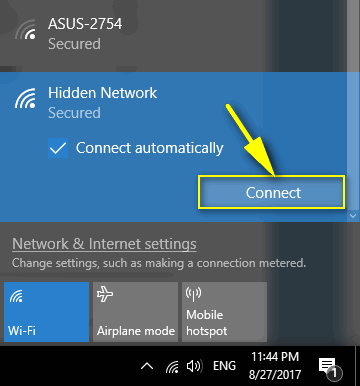

ApSniff has been tested to work on DWL-650 and LinkSys, it requires you to manually change the SSID to blank.

Aerosol has been tested to work on D-Link, LinkSys, Belkin, US Robotics, SMC, Netgear, HP HN210W USB and Intel Anypoint Wireless.His classes can be attended in Phoenix, Arizona or online from anywhere in the world with RemoteLive. Mike Danseglio teaches Security classes at Interface Technical Training. Interface Technical Training – Technical Director and Instructor Luckily, that doesn’t come up very often. That’s the primary flaw in this technique – if there are no clients an no traffic on the wireless network, getting the name will prove difficult. Of additional interest is the fact that I don’t see the names of the networks that have both minimal traffic and hidden names. My example SSID is Haxx0r, shown as the second one on the list. I see several more networks, some of which were previously hidden. Note that airodump-ng has been running for 2 minutes as shown at the top left of the window. And the more clients that are connected, the less time I need to passively wait before… As long as one client is connected, the reconnection will eventually occur. Sure, I could force clients to disconnect and reconnect through a denial of service attack, but that’s more aggressive than I want to be for this penetration test. Whenever a client connects or reconnects to this network, the access point sends its ESSID in the clear as part of the wireless association handshake. I see more than one entry, and each of those represent a separate Wi-Fi network that is not broadcasting its name. I know it’s the target based on the BSSID, or MAC address, matching my reconnaissance data. But since the name is currently hidden, it appears as. I can already see several wireless network names in the ESSID column. Now I fire off the process by executing airodump-ng –c 11 mon0 as shown:įigure 3. For this example, my target access point is on channel 11 (2.462 GHz). Identifying the channel can be done with a variety of tools, including the tool I use next, and will be the topic of a future blog. This is a purely optional step, as I can scan all channels until I succeed. The result of this command is that I have a new interface, mon0, assigned as a monitor mode port for wlan0 (the WNIC).īefore the next step I usually scan to determine the Wi-Fi channel my target is using. But they usually don’t interfere with scanning for hidden networks. If I wanted wireless networking to work consistently, I might have to kill those processes. I can safely ignore the warning about process interference for this example. The first one is airmon-ng start wlan0:įigure 2. The Intel WNIC is waiting to do my bidding. This is the network hardware showing the Intel WNIC assigned to WLAN0 and not associated with an access point:įigure 1. I’m also using the built-in Intel wireless NIC, so I don’t need any third-party or custom hardware. I’m running Kali Linux with Debian kernel 3.18.0 on a Lenovo X230 laptop. Kali is currently the single best penetration testing and security tool available, as it contains most every tool I could want in a minimalist operating system. Using Kali Linux to Find Hidden Wi-Fi Networks I’m demonstrating one easy method to do it here. Finding the name for a non-broadcasting Wi-Fi network is, with one exception, almost as easy as finding the name for any other Wi-Fi network. The common belief behind it is that if the network name is not being broadcast, it is harder for an attacker to find the network. They do this, in part, in an attempt to hide their network from uninvited users. Many Wi-Fi network administrators decide to disable SSID broadcasts.


 0 kommentar(er)
0 kommentar(er)
